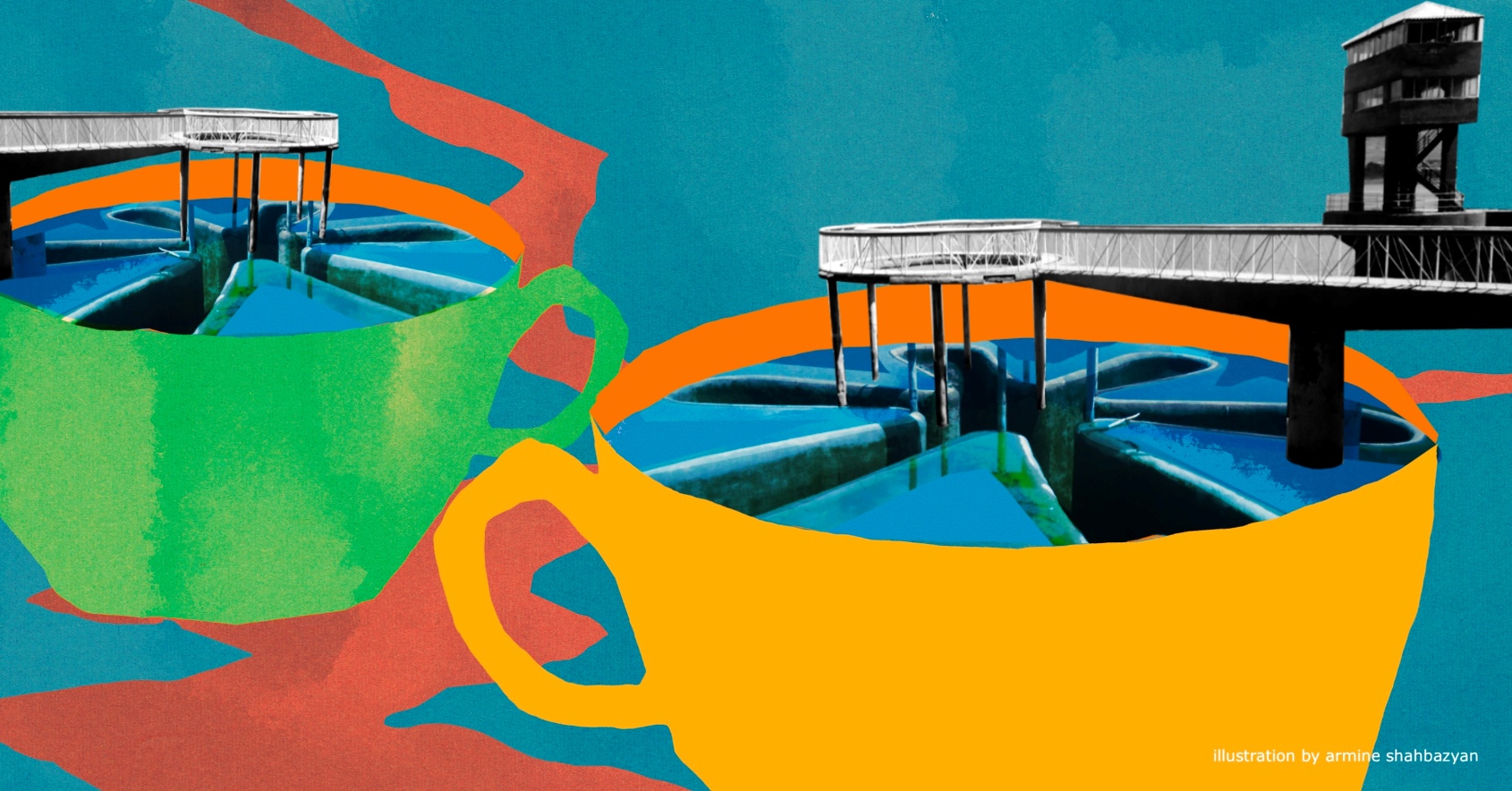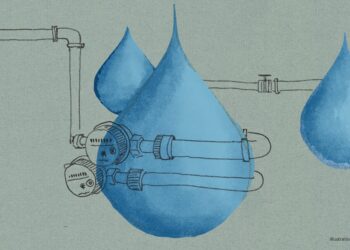
Listen to the article.
Floods and droughts are among the most urgent and devastating natural disasters worldwide, with significant social, ecological and economic consequences. Over the past century, these challenges have intensified due to climate change and human activity. Current climate trends indicate an increase in hydrometeorological hazards, including floods, mudflows, and landslides triggered by heavy rains. Simultaneously, drought risks are escalating due to reduced river flows during hot periods, increased crop water demands, decreased soil moisture, and rising temperatures. As these extreme events become more frequent and severe, mitigating their impact is critical to building resilience and ensuring societal sustainability.
In May 2024, Armenia’s northern regions of Lori and Tavush were hit by severe flooding caused by unprecedented rainfall. The Ministry of Environment reported that these regions received about half of their average monthly rainfall in over a single weekend. This led to the Debed and Aghstev rivers rising to levels not seen in 65 years.
While heavy floods are rare in Armenia, droughts are common and occur almost annually, particularly in lower and foothill regions. Studies show that these droughts are becoming more severe––the number of strong and very strong drought days rose by 33 days when comparing the baseline period (1961-1990) to 2000-2017. The drought zone has also expanded into higher mountainous areas and begins earlier in the year.
Hydrologist and water resource management expert Alexander Arakelyan explains that while it is too early to definitively link the May floods in northern Armenia to climate change, repeated extreme events—three or four times in a decade—would suggest an increased frequency characteristic of climate change. A single event cannot alone indicate climate change, as one occurrence does not establish a broader trend. Nevertheless, several climate change-related factors contributing to floods and droughts are already observable in the country.
Rapid snowmelt, caused by sharp temperature increases at the end of winter or early spring, is one significant factor leading to floods. Another is the increasing intensity of precipitation. While total annual rainfall may remain stable or decrease, it’s becoming more concentrated in shorter periods—within hours or days. This concentrated precipitation intensifies hydro-meteorological risks, including both floods and droughts.
According to the United Nations Development Program, while Armenia has sufficient water resources, its water sector faces complex challenges from both poor management and climate change. Expanding water storage capacity should be a key priority, alongside improving infrastructure, strengthening institutional capacities, and implementing effective sector policies.
The Armenian Government emphasizes the urgency of this issue in its 2022-2026 Program for Climate Change Adaptation in Water Resources. Rising temperatures will increase water demand for specific economic activities—particularly irrigation—requiring additional water resources. Climate change will also significantly alter seasonal river flow patterns. In mountainous areas, higher temperatures will push the snow cover boundary upward, reducing runoff in rivers fed by snowmelt. Consequently, diminished snow reserves will result in lower river flows during spring and summer.
The adaptation plan highlights how ecosystem-based measures can reduce flood and drought risks, improve water and soil quality, and enhance livelihood opportunities. These measures include wetland restoration, reservoir management, and watershed protection. The plan prioritizes constructing new, smaller reservoirs to improve water storage capacity and manage water availability fluctuations caused by changing climatic conditions.
Water Reservoirs: A Key Solution
Given Armenia’s vulnerability to climate change and the potential water stress it may face in the future, the World Bank, in a comprehensive 2015 report, had recommended that Armenia develop and implement a strategic plan to construct priority reservoirs. The plan would address economic, financial, environmental, and social dimensions. In its 2024 Country Climate and Development report, the World Bank reiterates its recommendation, highlighting the need to prioritize increasing water storage and efficiency as a key objective for addressing major bottlenecks to climate action. It calls on Armenia to rehabilitate and modernize water conveyance infrastructure, on-farm systems, and pumping stations, while also developing a master plan for new storage investments. The report further emphasizes that improving water resource efficiency—alongside enhanced storage capacity and macro-level management—is essential.
Water storage is a vital tool for managing hydrological variability and addressing growing water scarcity. Natural water availability often does not match demand, especially in regions with distinct wet and dry seasons. This creates a cycle of water surplus and shortage. Storage systems help solve this problem by capturing excess water and making it available when needed, effectively bridging gaps between periods of abundance and scarcity. This better distribution of freshwater across time and space helps reduce both flood and drought risks.
Water storage systems serve two key functions: they capture flood peaks to reduce downstream impacts, and they store water for use during dry periods. This dual function helps stabilize water availability and reduces risks from both floods and droughts. As precipitation patterns grow more extreme, these storage systems play an essential role in maintaining water security and climate resilience.
Armenia currently lacks a comprehensive water reservoir strategy, though its 2021-2026 government program includes plans for 15 new reservoirs. Of these, only one is designated for flood regulation. While the country inherited over 80 Soviet-era reservoirs, these new constructions will focus mainly on irrigation.
In addition to the 15 planned reservoirs, two others are nearing completion: the Kaps water reservoir in Shirak region and the Vedi water reservoir in Ararat region.
While acknowledging the size of the Kaps reservoir (with a capacity of 60 million cubic meters) and the Vedi reservoir (with a capacity of 29.4 million cubic meters), Arakelyan believes Armenia would benefit more from smaller ones. He recommends localized solutions in areas where meltwater or rainwater can be collected. This approach would better serve the irrigation needs of communities, avoiding the challenges of filling larger reservoirs. He argues that smaller reservoirs offer more sustainable and efficient solutions.
Armenia’s Ministry of Territorial Administration and Infrastructure informed EVN Report that design and budget estimation work has begun for six reservoirs: Yelpin, Kasakh, Lichq, Artik, Astghadzor and Argichi. The European Bank for Reconstruction and Development will assist with feasibility studies for the remaining nine reservoirs.
The 15 planned reservoirs will have a combined storage capacity of 117.17 million cubic meters of water. The Ministry is also exploring new sites for potential reservoir construction and has partnered with the Asian Development Bank to conduct feasibility studies for three additional locations: Karmir Gyugh, Garnahovit and Getik.
While Armenia’s water reservoirs are primarily used for irrigation, some, including those at Akhpara, Spandaryan, Tolors, Angeghakot and Tatev, also serve energy generation purposes. Hydropower plants contribute approximately 30% of Armenia’s electricity generation.
Current Issues
Despite Armenia having a water-rich year in 2024 with well-filled main reservoirs, half-empty reservoirs remain a recurring issue. While precipitation plays a role in reservoir levels, technical and maintenance challenges are also significant.
According to Arakelyan, the technical condition of dams is a major concern. Dams require constant monitoring and specialized maintenance to ensure safety. Poor upkeep can lead to cracks, leaks and major outflows—increasing flood risks and reducing storage capacity. Even small leaks diminish storage potential, while technical issues can prevent reservoirs from reaching full capacity.
Arakelyan also points to sediment buildup as another key challenge. Without regular cleaning accumulated sediment displaces water, reducing the reservoir’s effective storage capacity.
Arakelyan points out that reservoir maintenance schedules remain hidden from public view, with issues often surfacing only after problems arise––such as dam leaks caused by structural defects. While the regular maintenance of water reservoirs and dams is mandated by law, Arakelyan notes that actual implementation lacks clarity. These recurring preventable issues underscore the need for greater transparency and proactive management.
Despite these challenges, Arakelyan explains that reservoirs have filled well this year for two reasons: abundant precipitation and reduced irrigation demand, since rainfall directly met some irrigation needs. He emphasizes that improved integrated management—such as local irrigation solutions and water-saving technologies—could further improve reservoir levels by reducing irrigation demand.
Also see
How Far Has Armenia Come in Meeting Paris Climate Goals?
Seven years after Armenia ratified the Paris Agreement on climate change, Gor Samvel reviews measures Armenia has taken to implement key provisions of the treaty, focusing on mitigation, adaptation, transparency and compliance, highlighting achievements and areas in need of improvement.
Read moreAbundance of Both Water and Mismanagement
Armenia faces growing challenges in managing its water resources. Lake Sevan, a crucial water source, is being overused for irrigation, raising concerns about long-term sustainability. Mariam Tashchyan explores the factors behind Armenia’s water crisis.
Read moreThe Paris Agreement and Expanding Forest Coverage in Armenia
Armenia has pledged to expand forest coverage as part of its climate change mitigation efforts, echoing concerns that forests are the most endangered ecosystem in the country. By ratifying the Paris Agreement in 2017, it committed to increase forested areas. Gayane Mkrtchyan looks at the challenges and opportunities.
Read moreWhen Untreated Sewage Is Dumped Into Water Resources
Most settlements in Armenia lack proper sewerage systems. Even when such systems exist, the scarcity of sewage treatment plants leads to untreated waste being dumped into water resources.
Read more





